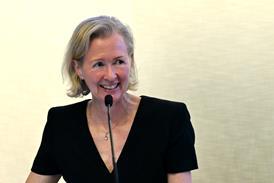The external pressure on law firms to become more diverse is expected to grow. Sasha Scott advises management to take a hard look at their approach and learn from the experience of US practices
How many lawyers can competently define the business case for diversity for their particular firm? If you had asked this question five years ago, the answer would have been 'very few'. Ask it in 2006 and the result would be a few more, but still not enough.
But not enough to satisfy whom? Who cares about the diversity of a law firm? Is there any need to make changes to the current composition of practices in the UK?
To answer these questions, we first need to identify the drivers for the sector.
The external pressure for change has increased. Law Society figures show that lawyers from ethnic minority backgrounds comprised around 9% of practising solicitors in 2004/05 - the most recent year for which complete data is available.
Earlier this year, the Black Solicitors Network published a diversity league table that revealed that just 3% of partners at the 100 largest UK law firms are ethnic minority lawyers. The level of participation in the survey was a concern too, with only 60 of the top 100 firms taking part.
The findings prompted Trevor Phillips, chairman of the Commission for Racial Equality, to attack the complacency within the profession. 'This report confirms our suspicions that there is institutional complacency in the legal profession when it comes to racial equality,' he said. 'Without visible signs of improvement, the legal services [providers] are inviting the government to consider tougher legislation and force them to do better.'
External client pressure is another formidable driver. But how many lawyers can articulate their firms' diversity initiatives if put on the spot by a client?
Top diversity players in the US have learnt that to win new clients and deepen existing relationships, diversity matters. Being able to talk about the firm's policy and its application, its role models and networking groups is seen as important to clients who value diversity.
There are inextricable links with corporate social responsibility and ethics. In the UK, we see this when pitching for public sector business - there is a need to be transparent about discrimination issues and policies. However, in 2006 the UK also saw multinationals such as Barclays requesting diversity information as a requirement from their legal providers. The tide is turning.
I recently spent time with the global head of diversity for a large law firm in the US, which is probably five years ahead of the UK in terms of the diversity journey. The questions they are being asked by clients are not only about visible differentiators such as race and gender, but are now at a deeper level, too.
For example, clients may ask: 'How can you assure us that we are getting a diverse team on this piece of work?' Alternatively, they may say: 'We do not want homogeneity of ideas and perspectives', or 'we want cultural, age, gender, orientation, race, and socio-economic diversity on this piece of work'.
This is being given added momentum because research in the US has pointed towards diverse teams being more productive and innovative than homogeneous teams that share the same background and perspective in terms of their approach to work.
Additional drivers come in the form of people capital - the talent that all law firms seek. Male, Anglo- Saxon heterosexuals do not have a monopoly on smart ideas and thus the sector is broadening its reach around recruitment and selection.
Internal culture and attitudes, not policy, determine the success of diversity initiatives, so this too is seen as an area ripe for change in order to retain talent and engage employees.
However, it is not all a picture of apathy - the legal sector in the UK is now reacting to dilemmas about diversity in a variety of ways. So what can be done?
Having a sound diversity policy is a start. Coupling this with a diversity committee and a steering group aligned to practice areas and held accountable for action is now more common. Follow this with partner-specific inclusion coaching and then a diversity training programme for all levels and we are really going somewhere.
Diversity is about far more than words on a policy. It is about challenging internal culture and attitudes that are formed at partnership level and seep downwards via mirroring behaviours.
One aspect of diversity not immediately obvious but key in terms of gender mix at partner level and retention and engagement is flexible working. There will inevitably be a policy, but is it hidden away in a back drawer and never advertised?
If a senior associate asks to work flexibly, what will the attitude be? It is attitudes that shape culture and if the response is 'this is career suicide if you want to be made up [to partner]', then the policy is useless.
Yet if the attitude is positive, along the lines of 'let's make this work', if both employee and employer are flexible with each other, and if the team can see the value of the atypical worker, it can be an excellent motivator and a visible demonstration of an organisation making the most of its diversity.
Do not also assume that flexible working is the preserve of working mothers. In the US and in the financial sector in the UK, enlightened firms have recognised that flexible policies need to be open to all to curtail polarisation and resentment about workers who are parents and those who have other commitments.
We have begun a journey within the legal sector, but it is a long road with no obvious finish.
Sasha Scott is managing director of Inclusive Diversity. For more information, visit www.inclusivediversity.com
Charity Explorer provides a reputable reference tool for solicitors, will-writers and their clients who want to leave a legacy or charitable gift.
Visit Charity Explorer
Whether you are looking for legal expert witnesses, legal training/CPD providers, international law firms, administration of estates, legal software suppliers, barristers chambers or any other general legal service, the Legal Services Directory will provide a suitable option.
Visit Legal Services Directory

























No comments yet